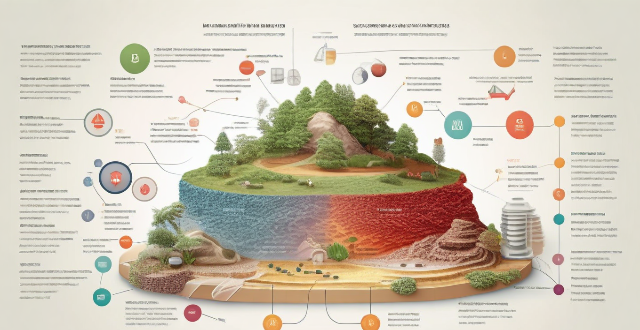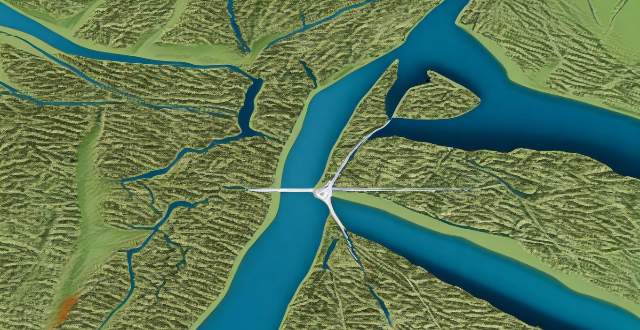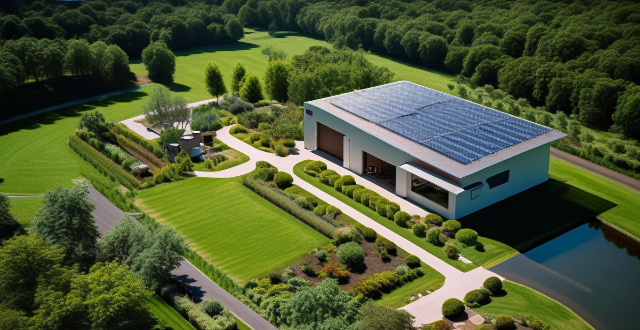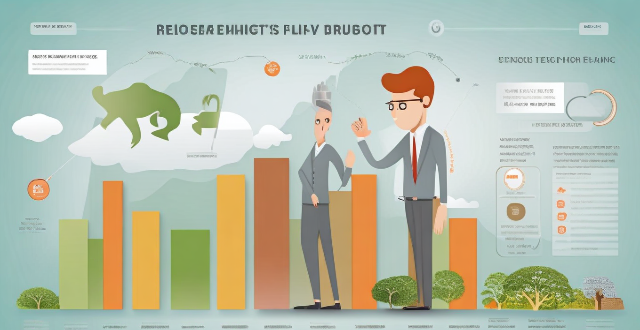Co2 Involve

What are some of the most effective methods for carbon sequestration ?
Carbon sequestration refers to the process of capturing and storing carbon dioxide (CO2) from the atmosphere to mitigate its effects on climate change. There are several effective methods for carbon sequestration, including afforestation and reforestation, soil carbon sequestration, biochar production, ocean fertilization, and direct air capture (DAC). Afforestation and reforestation involve planting new trees or replacing existing ones in deforested areas, while soil carbon sequestration involves increasing the amount of organic matter in soil by adding compost, manure, or other organic materials. Biochar production involves creating a type of charcoal made from plant materials that is added to soil to improve its fertility and water-holding capacity. Ocean fertilization involves adding iron or other nutrients to the ocean to stimulate the growth of phytoplankton, which absorb CO2 through photosynthesis. Direct air capture involves using machines to capture CO2 directly from the atmosphere and then store it underground or in other long-term storage solutions.

How long will it take for carbon sequestration to have a noticeable effect on atmospheric CO2 levels ?
Carbon sequestration is a process that aims to reduce atmospheric CO2 levels by capturing and storing carbon dioxide. The effectiveness of this process depends on various factors such as the rate of carbon sequestration, global emissions reduction efforts, and the health of natural carbon sinks. In the short term, it is unlikely that carbon sequestration alone will have a noticeable effect on atmospheric CO2 levels. However, in the medium to long term, if significant investments are made in scaling up carbon sequestration technologies and reducing global CO2 emissions, some noticeable effects may begin to emerge. These could include slower rates of CO2 accumulation, improved air quality, reduced global warming, and restoration of natural ecosystems. Therefore, sustained investments in carbon sequestration and other climate mitigation strategies can help achieve long-term reductions in atmospheric CO2 levels and mitigate the effects of climate change.

How can we involve community members in climate adaptation planning ?
Community engagement is crucial for successful climate adaptation planning. To involve community members, identify and engage stakeholders, develop a stakeholder engagement plan, use multiple channels of communication, involve community members in decision making, provide training and education, foster partnerships and collaboration, and monitor and evaluate progress. By doing so, you can create a more resilient community that is better prepared for the impacts of climate change.

Is carbon offsetting effective in reducing greenhouse gas emissions ?
Carbon offsetting is a strategy to compensate for CO2 emissions by investing in projects that reduce, avoid, or absorb an equivalent amount of CO2 elsewhere. While it can provide immediate action and support clean projects, there's a lack of standardization and potential for perverse incentives. Effectiveness depends on project quality and organizational integrity. It should be part of a broader strategy, not seen as a silver bullet.

What are some examples of carbon offset projects ?
Carbon offset projects are initiatives designed to reduce or offset the emission of carbon dioxide (CO2) and other greenhouse gases into the atmosphere. These projects aim to mitigate the impacts of climate change by investing in activities that remove CO2 from the atmosphere or prevent its release in the first place. In this guide, we will explore some examples of carbon offset projects and how they contribute to the global effort to combat climate change.

How much carbon dioxide can be sequestered through different methods ?
The amount of carbon dioxide that can be sequestered varies significantly depending on the method and site conditions. Different methods include geological storage, ocean storage, and terrestrial storage, each with different potentials and technical requirements for CO2 sequestration. Geological storage is one of the most promising methods for long-term storage of CO2. It involves injecting and storing CO2 deep underground, typically in saline formations, depleted oil and gas reservoirs, and unmineable coal seams. The potential for CO2 storage in these geological structures is influenced by various factors such as the size, depth, and permeability of the formations, as well as the existence of impermeable cap rock to contain the CO2. Deep saline formations are porous and permeable rocks filled with saltwater that can store CO2 in various forms such as free gas, dissolved in brine, or mineralized after reacting with the host rock. Depleted oil and gas reservoirs offer another option for CO2 storage. After hydrocarbon extraction, these fields have remaining pore space that can be used to inject and store CO2. Unlike saline formations, they often have pre-existing infrastructure for drilling and injection, which can reduce the cost of storage. Unmineable coal seams, also known as coal bed methane (CBM) reservoirs, can store CO2 through a process called enhanced coal bed methane recovery. In this process, injecting CO2 into coal seams displaces methane, which can be recovered as a energy source while sequestering the CO2. Ocean storage involves dissolving CO2 in seawater at great depths where it remains isolated from the atmosphere. This method relies on either natural processes like ocean upwellings or engineering techniques such as direct injection or pipeline delivery systems. While the exact storage capacity is difficult to estimate due to complex ocean dynamics, studies suggest that the global ocean could theoretically absorb thousands of gigatons of CO2. Terrestrial storage focuses on enhancing the natural processes by which ecosystems capture and store carbon. This includes reforestation, afforestation, and soil management practices that increase carbon stocks in vegetation and soils. The potential for terrestrial storage is significant but varies widely depending on factors like climate, soil type, and land use practices. Globally, it is estimated that forests alone could potentially sequester hundreds of gigatons of CO2 over several decades.

What is carbon capture and how does it work ?
Carbon capture, a technology to reduce CO2 emissions from industrial processes and power generation facilities, comprises three main types: post-combustion, oxy-fuel combustion, and pre-combustion. Each method captures CO2 differently, and the captured gas can be stored or used for other purposes. Carbon capture offers benefits such as reducing greenhouse gas emissions and supporting the transition to a low-carbon economy but faces challenges like high costs and energy requirements.

What role does deforestation play in climate change ?
The Role of Deforestation in Climate Change Deforestation contributes to climate change by reducing the Earth's capacity to absorb CO2 and releasing stored carbon back into the atmosphere. This process exacerbates the greenhouse effect, leading to global warming. Key points include: - Loss of Carbon Sinks: Trees act as natural carbon sinks, capturing and storing CO2. When forests are destroyed, these carbon sinks are lost. - Release of Stored Carbon: Deforestation releases the carbon stored in trees back into the atmosphere, increasing atmospheric CO2 levels. - Biodiversity Loss: Forests are home to a vast array of species. Deforestation leads to habitat destruction and loss of biodiversity. - Soil Erosion and Degradation: Trees help maintain soil quality. Without trees, soil can become degraded, reducing its ability to store carbon. - Albedo Effect: Forests have a darker surface than bare ground, meaning they absorb more sunlight and heat. When forests are replaced with lighter-colored surfaces like grasslands or croplands, the albedo (reflectivity) of the land increases. - Feedback Loops: Deforestation can create feedback loops that exacerbate climate change. For example, as temperatures rise due to increased CO2 levels, it becomes harder for some forests to survive, leading to further deforestation and more CO2 emissions. To combat the role of deforestation in climate change, strategies such as reforestation and afforestation, sustainable forestry practices, protection of intact forests, promotion of agroforestry, and public awareness and education can be employed.

Can carbon capture help us achieve our climate goals ?
Carbon capture and storage (CCS) has the potential to mitigate climate change by capturing CO2 emissions from power plants and industrial processes, preventing them from entering the atmosphere. The captured CO2 can be transported to a suitable location for long-term storage or used for enhanced oil recovery. However, CCS technology faces challenges such as high costs, energy losses, and public acceptance issues. While it is not a silver bullet, CCS could play a valuable role in reducing greenhouse gas emissions when integrated with renewable energy strategies and energy efficiency measures.

Are diesel hybrid vehicles better for the environment than regular diesel vehicles ?
Diesel hybrid vehicles, which combine a diesel engine with an electric motor, have the potential to be more environmentally friendly than regular diesel vehicles. They can offer improved fuel economy and reduced emissions of CO2 and particulate matter. However, the production of batteries for hybrid vehicles can result in higher upstream CO2 emissions, and advanced emission control systems are needed to significantly reduce NOx emissions. A comprehensive lifecycle analysis that takes into account all factors would provide a clearer picture of the environmental benefits of diesel hybrid vehicles compared to regular diesel vehicles.

What are the potential benefits of geoengineering ?
The potential benefits of geoengineering, which involvesThe potential benefits of geoengineering, which involves in the Earth's climate which involves large-scale interventions in the Earth's climate system, include mitigating climate change by reducing global warming and cooling the planet, protecting ecosystems and biodiversity, improving human health and well-being, offering economic advantages, and enhancing international cooperation. However, these benefits are accompanied by significant risks and uncertainties, necessitating thorough research, ethical consideration, and public debate before any large-scale implementation.

What are the different types of fire extinguishers ?
This text provides a comprehensive guide to the various types of fire extinguishers available, each designed for specific classes of fire. It includes detailed descriptions and pros & cons of water, foam, carbon dioxide (CO2), dry chemical, wet chemical, pre-action wet chemical, and clean agent fire extinguishers, emphasizing their suitability for different types of fires such as class A, B, C, and K. The text concludes by highlighting the importance of choosing the right type of extinguisher based on potential fire hazards in one's environment.

What are the challenges associated with large-scale carbon sequestration ?
Large-scale carbon sequestration faces numerous challenges including technical obstacles, economic barriers, and social concerns. Technical challenges include developing efficient capture technology, finding suitable storage capacity, building transportation infrastructure, and ensuring ongoing monitoring and verification. Economic challenges involve high costs, lack of financial incentives, and market competition from renewable energy sources. Social and environmental challenges encompass public perception, potential environmental impacts, energy consumption, and legal and regulatory issues. Addressing these challenges requires a multidisciplinary approach involving collaboration among scientists, engineers, policymakers, and the public.

How can we involve vulnerable communities in climate action planning and implementation ?
Involving vulnerable communities in climate action planning and implementation is crucial for creating effective, equitable, and sustainable solutions to the climate crisis. Here's how we can ensure their involvement: 1. Identify and engage with vulnerable communities through community meetings, workshops, and consultations. 2. Build trust and capacity within these communities by involving them in decision-making processes, providing regular updates on progress, demonstrating transparency and accountability, and offering training programs on climate change science, policy advocacy, and project management skills. 3. Collaborate with vulnerable communities to develop solutions that address their specific needs and priorities while being culturally sensitive and respectful of local traditions and practices. 4. Regularly monitor progress towards climate action goals and evaluate the impact of initiatives on vulnerable communities by collecting data on changes in environmental conditions, economic opportunities, and social wellbeing, as well as seeking feedback from community members.

What are the primary sources of greenhouse gas emissions ?
Greenhouse gas emissions are a major contributor to global warming and climate change, with the primary sources being fossil fuels, deforestation, industrial processes, and agriculture. Fossil fuels release carbon dioxide into the atmosphere when burned, while deforestation releases stored carbon from trees. Industrial processes often use fossil fuels or other materials that produce CO2 and other greenhouse gases like methane and nitrous oxide. Agriculture also contributes to emissions through livestock farming, fertilizer use, and changes in land use leading to deforestation and soil degradation.

How do industrial processes contribute to greenhouse gas emissions ?
Industrial processes significantly contribute to greenhouse gas (GHG) emissions, which are a major driver of climate change. These contributions come from various sources including energy consumption, manufacturing processes, agricultural industries, construction industries, and waste management. Mitigation strategies such as improving energy efficiency, optimizing processes, implementing carbon capture and storage technologies, and enforcing policy and regulation can help reduce these emissions.

What are some examples of geoengineering techniques ?
Geoengineering techniques aim to counteract climate change through large-scale interventions in the Earth's climate system. These techniques include solar radiation management (SRM) methods like stratospheric aerosol injection and space sunshades, as well as carbon dioxide removal (CDR) strategies such as direct air capture (DAC), ocean fertilization, bioenergy with carbon capture and storage (BECCS), enhanced weathering, forestation and reforestation, and soil carbon sequestration. Other techniques involve albedo modification on Earth and atmospheric aerosol spraying. Despite their potential, these methods pose significant risks and uncertainties, necessitating further research before widespread use.

How do greenhouse gas emissions vary across different industries ?
Greenhouse gas emissions vary significantly across different industries due to the nature of their operations, energy sources used, and the level of technology employed. The largest emitters include electricity generation, transportation, manufacturing, agriculture, construction, services, and waste management. Electricity generation is one of the largest emitters of greenhouse gases, especially when powered by fossil fuels like coal, oil, and natural gas. Renewable energy sources such as wind, solar, and hydroelectric power generation have much lower emissions as they do not involve burning fossil fuels. However, there are still emissions associated with their production and installation processes. In transportation, cars, trucks, and buses that run on petrol or diesel emit CO2 and other pollutants. Electric vehicles reduce these emissions but their environmental impact depends on how the electricity used to charge them is produced. Aviation has a significant carbon footprint due to the fuel efficiency of aircraft and the altitude at which they release emissions. Maritime transport also contributes to greenhouse gas emissions through the use of heavy fuel oil in ships' engines. Iron and steel production, cement manufacturing, and chemical processing are among the heaviest emitting industries because they require high temperatures which are typically achieved through burning fossil fuels. Sectors such as textiles, electronics, and food processing generally have lower emissions than heavy industry but still contribute to the overall carbon footprint through energy consumption for machinery operation and industrial processes. Livestock farming produces methane (CH4), a potent greenhouse gas, during digestion. Manure management also leads to emissions of both CH4 and nitrous oxide (N2O). Farming practices including tillage, fertilizer use, and irrigation can result in N2O emissions and CO2 emissions from soils. The production of building materials like concrete and glass is energy-intensive and generates CO2 emissions. Additionally, deforestation for timber contributes to carbon emissions. The design and construction methods of buildings can influence their long-term energy consumption; poorly insulated buildings will require more energy for heating and cooling, leading to higher emissions over time. Emissions come from office equipment, lighting, and heating/cooling systems in office buildings. The type of energy source used for these purposes greatly affects the total emissions. Hotels and restaurants contribute to emissions through their energy use for cooking, refrigeration, and guest accommodation needs. Decomposing organic waste in landfills produces CH4, which traps more heat than CO2 over a 20-year period. Processes such as wastewater treatment and incineration also generate greenhouse gases depending on the technology and management practices used. By implementing cleaner technologies, improving energy efficiency, and shifting towards renewable energy sources, it is possible to reduce the environmental impact of various sectors and work towards a sustainable future.

What role do governments play in addressing climate vulnerability ?
The essay discusses the various ways governments can address climate vulnerability, including mitigation, adaptation, and resilience building. Mitigation involves reducing greenhouse gas emissions to slow down the rate of climate change, while adaptation involves adjusting to the impacts of climate change that cannot be avoided. Resilience building involves enhancing the ability of systems and populations to cope with climate change impacts. The essay emphasizes the crucial role of governments in implementing policies and programs that reduce the risks associated with climate change.

How can parents involve their children in household chores in a fun and educational way ?
Household chores can be made fun and educational for children by creating a chore chart, turning chores into games, involving them in meal planning and preparation, assigning age-appropriate chores, and offering praise and rewards. These methods help teach valuable skills and promote family bonding.

What are the benefits of carbon capture technology ?
Carbon capture technology offers benefits such as reduced greenhouse gas emissions, improved energy efficiency, economic opportunities, and potential for climate change mitigation.

In what situations is it important to involve a financial advisor in budget planning ?
Involving a financial advisor in budget planning is crucial during significant life events, large investments, debt management, retirement planning, and tax planning. A professional can help develop a budget that meets short-term needs while achieving long-term goals.

Are there any environmental risks associated with carbon sequestration techniques ?
The topic summary for the provided text is as follows: **Carbon Sequestration Techniques and Environmental Risks** - Carbon sequestration techniques aim to reduce greenhouse gas impact on climate change by capturing and storing CO2. - Different methods include geological storage, ocean storage, terrestrial sequestration, and enhanced weathering. - Each technique comes with potential environmental risks such as leakage, induced seismicity, ocean acidification, soil health impacts, biodiversity changes, and mineral extraction impacts. - Management and mitigation strategies involve monitoring, site selection, regulatory oversight, and public engagement to minimize these risks.

How do fossil fuels contribute to global warming ?
Fossil fuels contribute to global warming by releasing greenhouse gases like carbon dioxide during combustion, trapping heat in the Earth's atmosphere and causing the planet's average temperature to rise. This process leads to climate change impacts such as rising sea levels, extreme weather events, and loss of biodiversity. The production and consumption of energy derived from fossil fuels play a significant role in these emissions. To mitigate the effects of global warming, transitioning towards renewable energy sources like solar power, wind energy, and hydroelectric power is essential.

How can companies implement effective risk management strategies ?
Effective Risk Management Strategies for Companies Risk management is a critical aspect of any business operation. It involves identifying, assessing, and prioritizing potential risks that could impact the company's objectives. Here are some effective risk management strategies that companies can implement: 1. Identify Potential Risks: The first step in implementing effective risk management is to identify potential risks. This involves analyzing the company's operations and processes to determine what could go wrong. Some common types of risks include financial risks, operational risks, strategic risks, and compliance risks. 2. Assess and Prioritize Risks: Once potential risks have been identified, they need to be assessed and prioritized based on their likelihood and potential impact. This involves assigning each risk a score based on its severity and probability of occurrence. The risks can then be ranked in order of priority, with the most significant risks being addressed first. 3. Develop Risk Mitigation Plans: For each identified risk, a mitigation plan should be developed. This plan should outline the steps that will be taken to reduce or eliminate the risk. Mitigation plans can include avoidance, reduction, transfer, or acceptance. 4. Monitor and Review Risks Regularly: Risk management is an ongoing process, and companies should regularly monitor and review their risks. This involves tracking changes in the business environment and updating risk assessments accordingly. It also involves evaluating the effectiveness of risk mitigation plans and making adjustments as needed. In conclusion, effective risk management strategies involve identifying potential risks, assessing and prioritizing them, developing mitigation plans, and regularly monitoring and reviewing them. By implementing these strategies, companies can reduce their exposure to risks and protect their operations and bottom line.

How can we involve marginalized communities in climate decision-making processes ?
Involving marginalized communities in climate decision-making is crucial for equitable solutions. Identify and engage these communities, build trust, provide info & resources, incorporate local knowledge, ensure participation, address power imbalances, and monitor progress.

What are some local experience activities that involve food and drink ?
The text provides a summary of various local experience activities involving food and drink. These include cooking classes, food market tours, brewery and winery visits, culinary walking tours, farm-to-table dinners, food festivals, ethnic cuisine experiences, private dining experiences, gourmet safaris, and interactive restaurant concepts. Each activity offers a unique way to explore local cuisine and culture, providing insights into the daily life of locals and their eating habits.

What are some innovative technologies being developed to address climate change ?
The article provides a summary of innovative technologies being developed to address climate change. These include renewable energy sources such as solar, wind, hydroelectric, and geothermal power; carbon capture and storage (CCS) methods like post-combustion capture, oxy-fuel combustion, and pre-combustion capture; electric vehicles (EVs); smart grid technology; nuclear fusion; afforestation and reforestation; and green building design. These technologies aim to reduce greenhouse gas emissions, increase energy efficiency, and promote sustainable practices in order to combat climate change and transition towards a more sustainable future.

What services do sports rehabilitation centers offer ?
Sports rehabilitation centers offer a variety of services to help athletes recover from injuries and improve their overall performance. These services include physical therapy, athletic training, strength and conditioning programs, sport-specific training, and recovery strategies. Physical therapy involves manual therapy, therapeutic exercise, and functional training to regain strength, flexibility, and mobility in injured areas. Athletic trainers assess injuries, develop personalized rehabilitation plans, and implement prevention strategies to reduce the risk of future injuries. Strength and conditioning programs focus on building muscle strength, increasing endurance, and improving flexibility through resistance training, cardiovascular training, and stretching exercises. Sport-specific training involves developing skills and techniques required for success in a particular sport, as well as mental preparation for competition. Recovery strategies such as cryotherapy, massage therapy, and proper hydration and nutrition help athletes recover from intense training sessions or competitions more quickly and efficiently.

What is geoengineering and how does it work ?
Geoengineering refers to the deliberate and large-scale intervention in the Earth's climate system to counteract or reduce the effects of global warming. It is a set of methods and technologies that aim to reduce global temperatures by altering the environment, rather than reducing greenhouse gas emissions. There are two main types of geoengineering: Solar Radiation Management (SRM) and Carbon Dioxide Removal (CDR). SRM involves reflecting sunlight back into space before it can warm the surface of the Earth, while CDR involves removing carbon dioxide from the atmosphere either by natural or artificial means. The effectiveness of geoengineering depends on the type being used. For SRM, the goal is to cool the planet by increasing the albedo effect, while for CDR, the goal is to reduce the amount of CO2 in the atmosphere. However, geoengineering also poses significant risks and challenges, including unintended consequences such as changes in precipitation patterns and damage to ecosystems. Additionally, there is a risk that relying on geoengineering could reduce motivation to reduce greenhouse gas emissions. Therefore, it should be seen as a complementary strategy to mitigation and adaptation efforts.